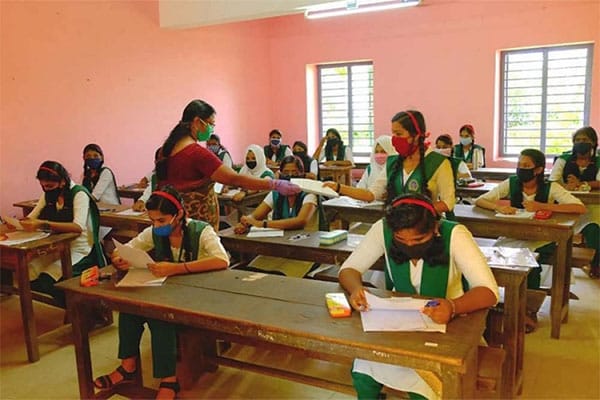( February 2, 2021 )

The current teacher education system should include technological advancements, child-psychology and development, issues related to health, safety and nutrition of children.
Building an effective education system in a beyond Covid-19 world needs to include a collaborative stakeholder engagement and customized solution for all target groups. It is pertinent to note the plethora of challenges that Covid-19 has brought to the fore since March 2020 —- digital divide, gender- digital divide, and quality of training.
Even before Covid, India’s education sector was already trailing with insufficient number of teachers, quality of teachers, ecosystem for training teachers, setting the ground for digital education model. Students were at the receiving end of these sectoral issues.
If we solely focus on the impact of Covid-19, we will be at the risk of downsizing the problem in Indian context. However, let us look at the Covid-19 impact before we access the reforms required in the sector. For educators across the world, the pandemic has been a quintessential adaptive and transformative challenge, a challenge with no predefined guide, but in the Indian context, the trouble is deep rooted in lack of innovative digital infrastructure for connecting students, teachers, parents, and institutions on a single platform. These while there is an immense focus to find solution on one end-students —- there is less emphasis on teaching the teachers.
Defining the problem holistically
Dialling back a step, the infrastructure for education, sufficient budgetary allocation, quality of education and pupil teacher ratio (30:1) were key issues of the sector. These resulted in warped primary education which created a domino effect for high education, students coming out of the higher education system also lacked the desired technical and managerial competency and skills and are often found unemployable.
Enter Covid-19
An in-depth study conducted by Smile Foundation titled- Scenario amidst Covid 19 – On ground Situations and Possible Solutions, identified digital divide. The findings of the study showed that 43.99 per cent of surveyed children have access to smartphones and another 43.99 per cent of students have access to basic phones while 12.02 per cent do not have access to either smartphones or basic phones. A total of 56.01 per cent children were found to have no access to smartphones, the study said. This gave us a baseline assessment of the digital divide. Further Smile Foundation suggested customised solutions for covering students with smartphones, with basic phones and with no phones.
There is no such study or assessment on teachers understanding of online education, online examination and online evaluation. This again needs to be looked at with various sub lenses- urban-rural, socio-economic and gendered lens. The teachers are also new to the pandemic. They have no prior manual to function in this new world order. There are two ways to map the gap, a feedback study by parents or an online evaluation check for teachers. Either route will help the education sector define the problem.
Why is there a problem?
At the moment defining this problem means keeping a check on education success matrices in India. Over the past few years we have tried to curb the dropout rate, increase enrolment in schools and also worked on improving the basic education. All these indices do not paint a pretty picture, Annual Status of Education Report (ASER) 2018 reported that more than 50 per cent of class V students could not read and comprehend text prescribed for class II students. All these efforts would further derail if teachers are effective and efficient in the online model. A complete digitisation in the education industry has made upskilling in technology-use a prime necessity for teachers.
A few challenges have been identified by a study conducted in Uttarakhand. The findings revealed four categories of barriers that are faced by teachers during online teaching and assessments. Under home environment settings, a lack of basic facilities, external distraction and family interruption during teaching and conducting assessments were major issues reported. Institutional support barriers such as the budget for purchasing advanced technologies, a lack of training, a lack of technical support and a lack of clarity and direction were also reported. Teachers also faced technical difficulties. The difficulties were grouped under a lack of technical support, it included a lack of technical infrastructure, limited awareness of online teaching platforms and security concerns. These barriers need to be identified across states with specific problems.
Empowering teachers by effective training
India is committed to achieving Sustainable Development Goals within the next one decade. With the clock running, the sector needs swift action to train the teachers. This means there should be a robust collaboration between private and public institutions in bringing up to speed the quality of teachers. The focus should be a “go to” programme for teachers for revamping their skills throughout their career. The current teacher education system should include technological advancements, child-psychology and development, issues related to health, safety and nutrition of children. Teaching learning and child development should go hand in hand.
Solution seems to be training the Guru for the future that is already here. The solution won’t be one size fits all. It will need a collaborative and inclusive approach by think tanks, government, ed-tech startups to collaboratively understand the current efficiency level of teachers and then provide solutions to upskill them.